Idea by
Denisa Kollarova and Anna van Lingen
Seventeen Playgrounds
http://seventeenplaygrounds.com/
Call for ideas 2019
Seventeen Playgrounds
Seventeen Playgrounds
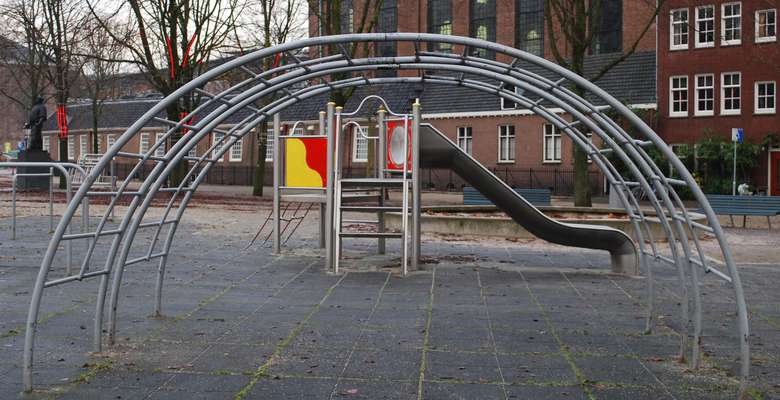
- Systemic changes
Seventeen Playgrounds is an architecture research project advocating for playgrounds that challenge children’s imagination. This project educates cities to understand playground as an opportunity for experimenting and it argues against the present understanding of playground to be a product, which can be purchased in the online catalogue, copy-pasted into any type of environment. Bright colours, plastic structures and animal-shaped elements seem to have set the tone, leaving little room for the imagination. It is of great importance that we—citizens, parents, designers, architects, city decision makers—realise the necessity of high quality playgrounds. City decision makers, politicians, parents, designers and architects should realise that children spaces are as important as other examples of the build environment. May all citizens feel free to join our mission: let’s give children the chance to grow up with the stimulating playgrounds that they deserve.
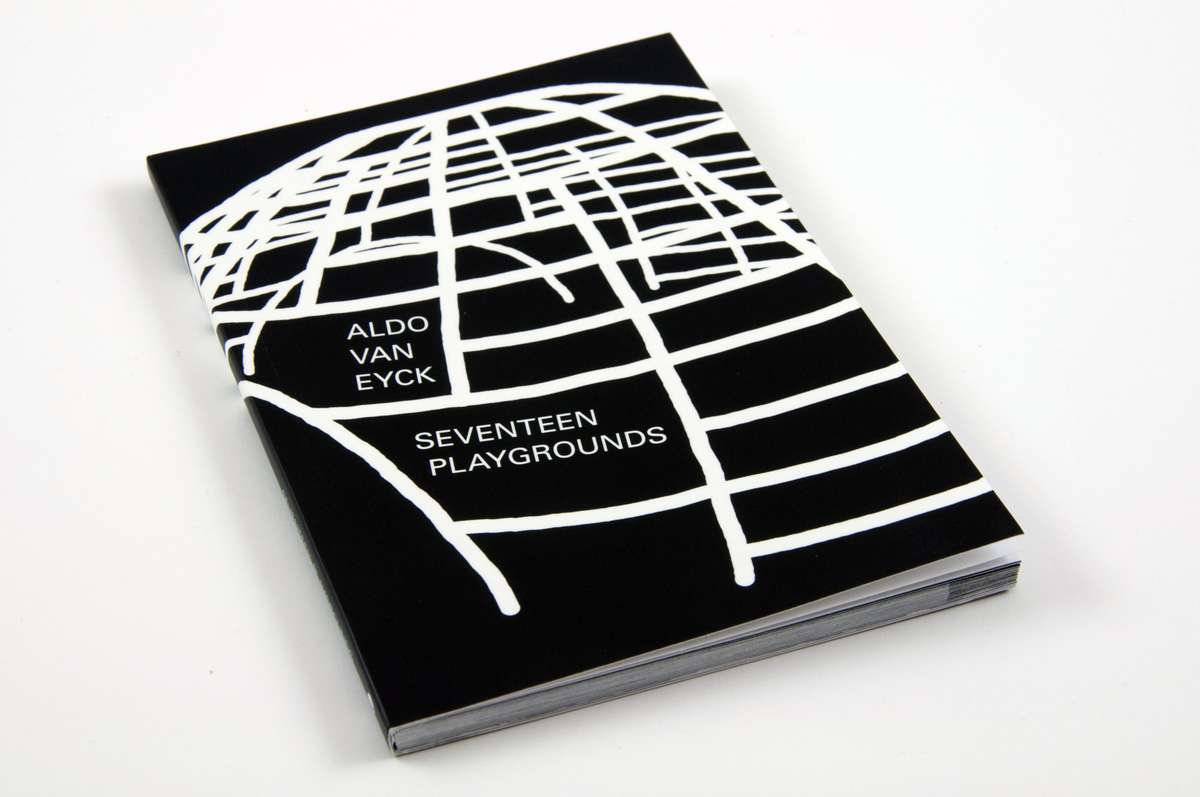
Aldo van Eyck, Seventeen Playgrounds is a pocket size tour guide that brings you to seventeen remaining playgrounds in the centre of Amsterdam. While you are moving from one playground to the next, you will get to know more about the city, Aldo van Eyck and his ideas about designing for children.
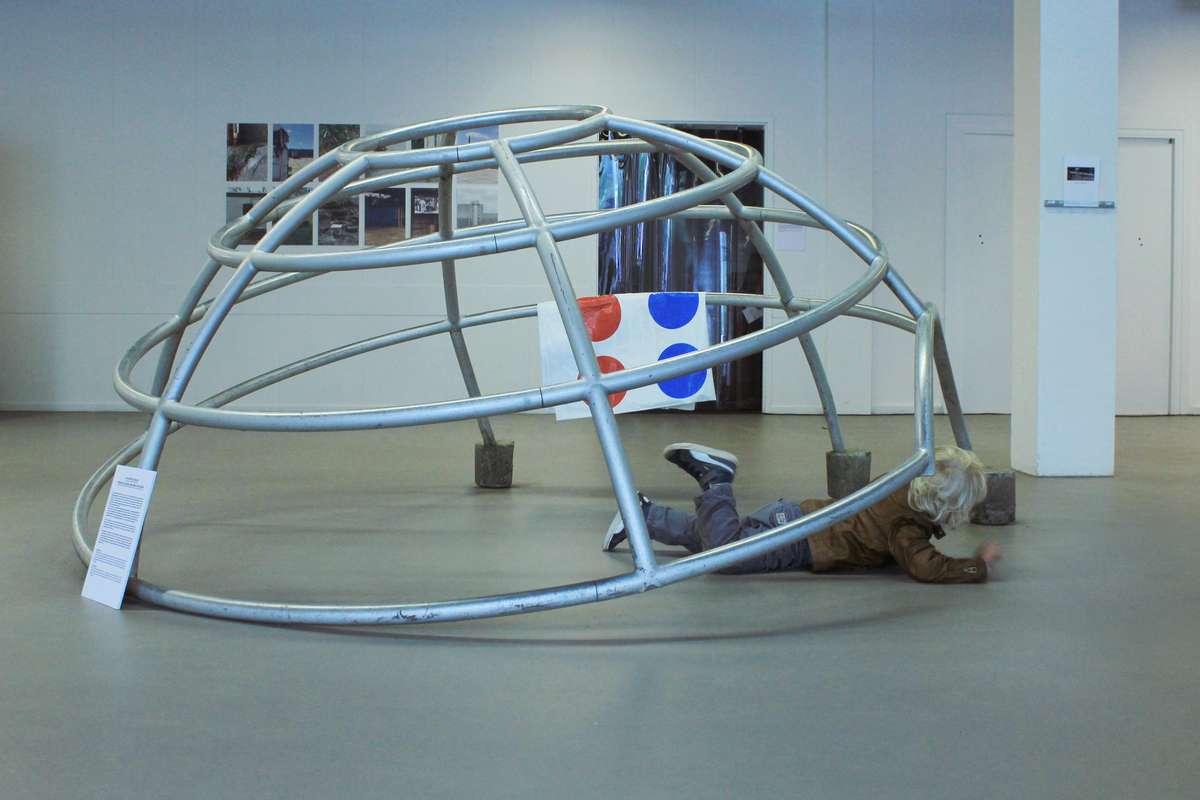
While we were cycling though the city with an old map of Van Eyck’s playgrounds to discover that yet another one, and than another one no longer existed, we were shocked to discover something that looked like an original Van Eyck. Behind a school building we found an injured aluminium climbing frame. It was an igloo that had been part of the school’s playground but was replaced by new play equipment.
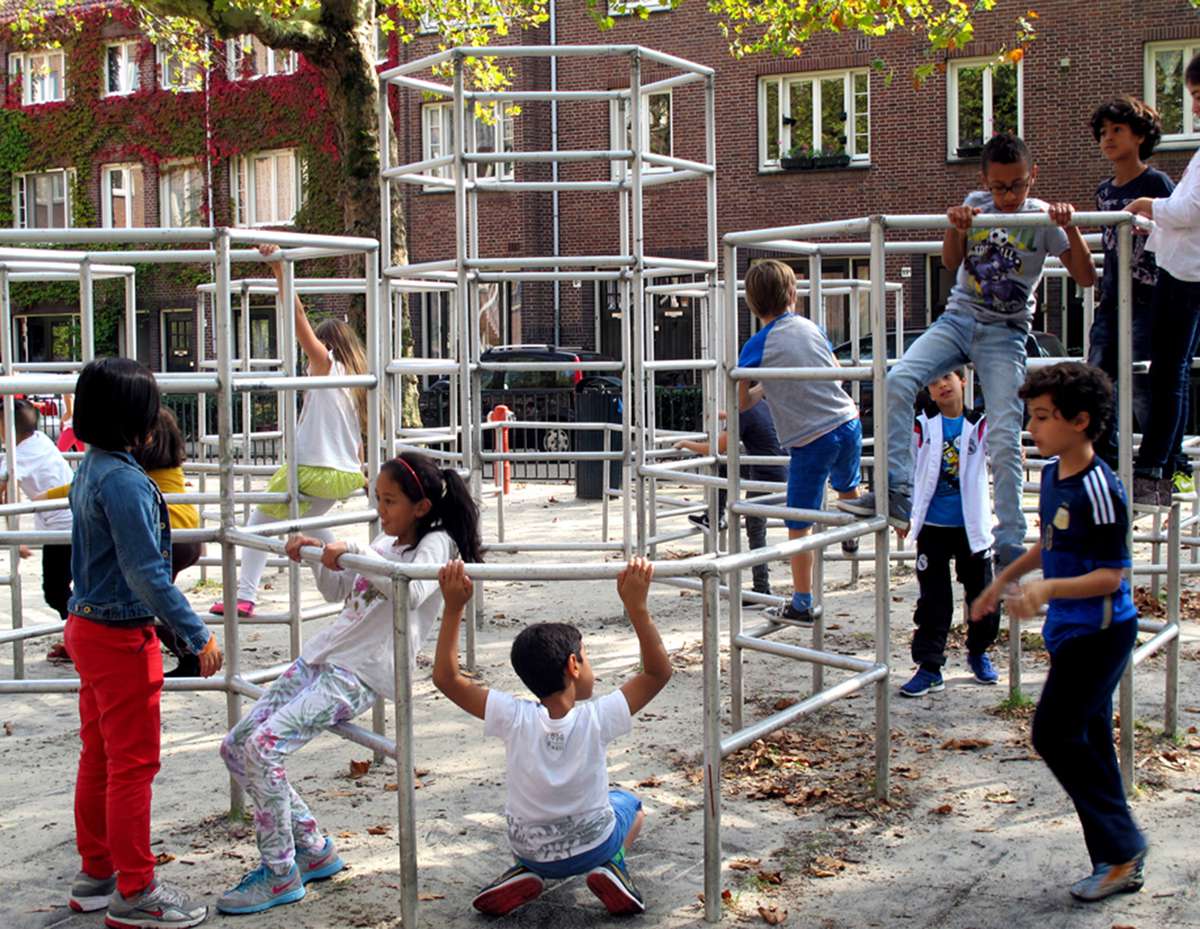
Playground designed in 1947 by Aldo van Eyck in Bertelmanplein, Amsterdam
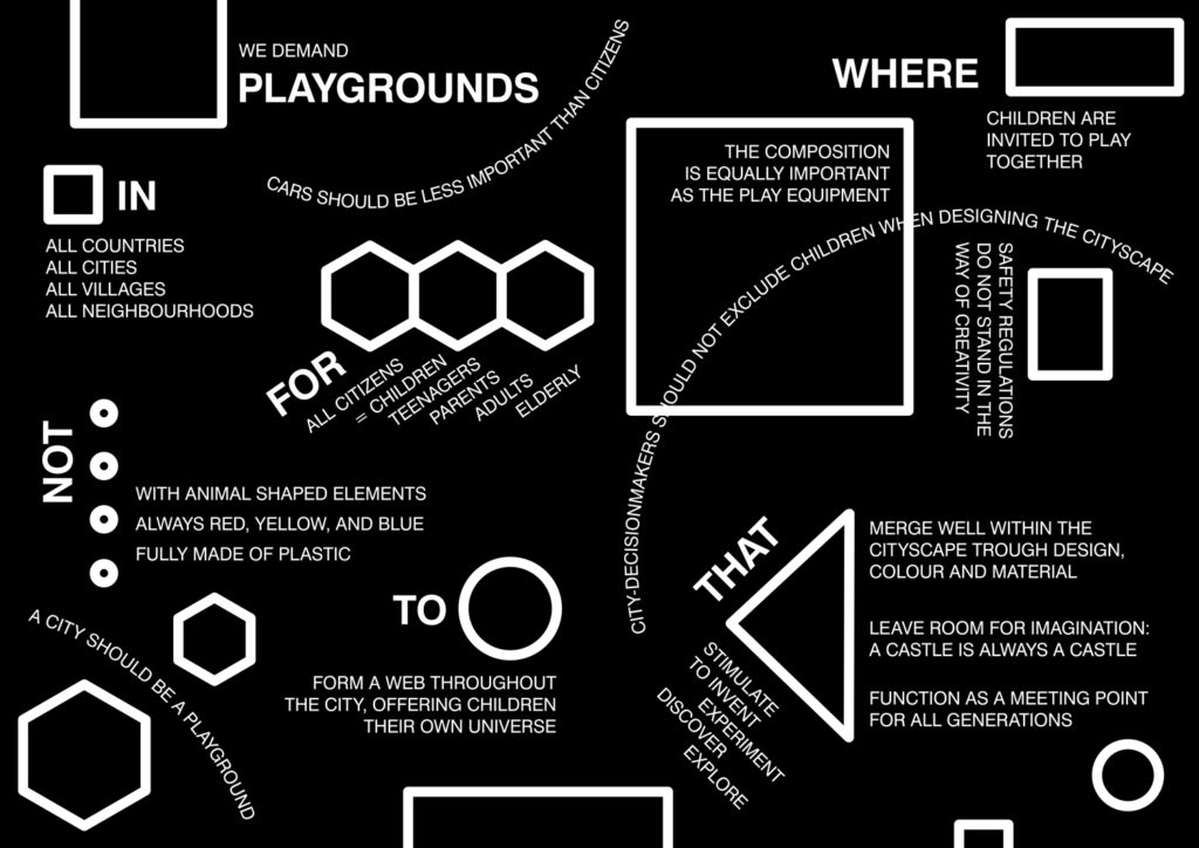
Visual Manifesto is a proposal of what to think about when designing more stimulating playgrounds for all generations. It is a playful tool for people who work on the playground projects and question how to start designing for children.
Seventeen Playgrounds
Seventeen Playgrounds

- Systemic changes
Seventeen Playgrounds is an architecture research project advocating for playgrounds that challenge children’s imagination. This project educates cities to understand playground as an opportunity for experimenting and it argues against the present understanding of playground to be a product, which can be purchased in the online catalogue, copy-pasted into any type of environment. Bright colours, plastic structures and animal-shaped elements seem to have set the tone, leaving little room for the imagination. It is of great importance that we—citizens, parents, designers, architects, city decision makers—realise the necessity of high quality playgrounds. City decision makers, politicians, parents, designers and architects should realise that children spaces are as important as other examples of the build environment. May all citizens feel free to join our mission: let’s give children the chance to grow up with the stimulating playgrounds that they deserve.
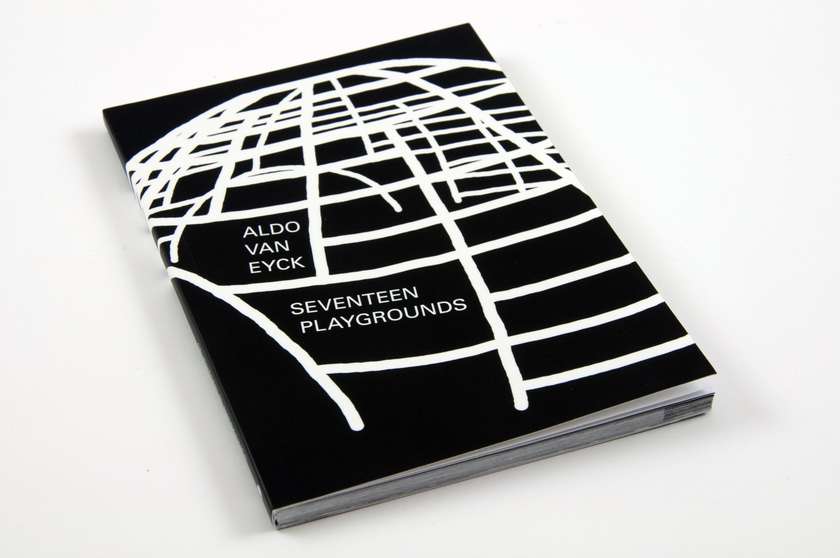
Aldo van Eyck, Seventeen Playgrounds is a pocket size tour guide that brings you to seventeen remaining playgrounds in the centre of Amsterdam. While you are moving from one playground to the next, you will get to know more about the city, Aldo van Eyck and his ideas about designing for children.
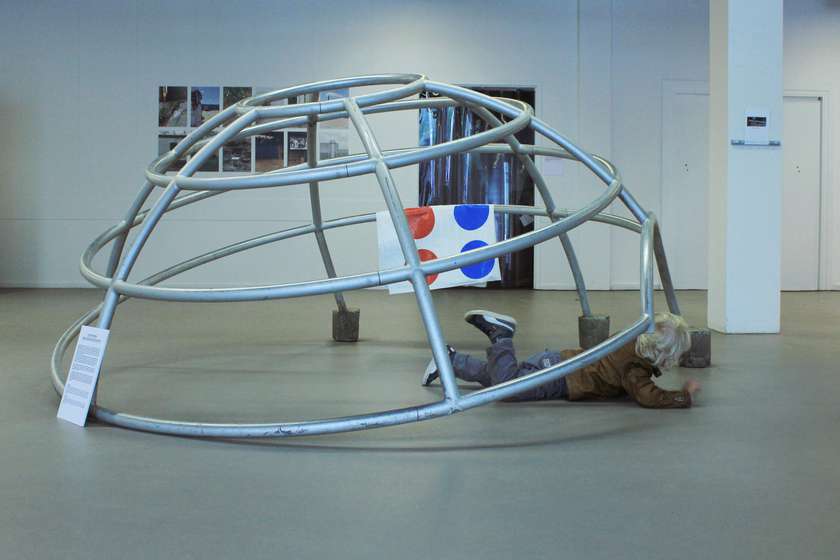
While we were cycling though the city with an old map of Van Eyck’s playgrounds to discover that yet another one, and than another one no longer existed, we were shocked to discover something that looked like an original Van Eyck. Behind a school building we found an injured aluminium climbing frame. It was an igloo that had been part of the school’s playground but was replaced by new play equipment.
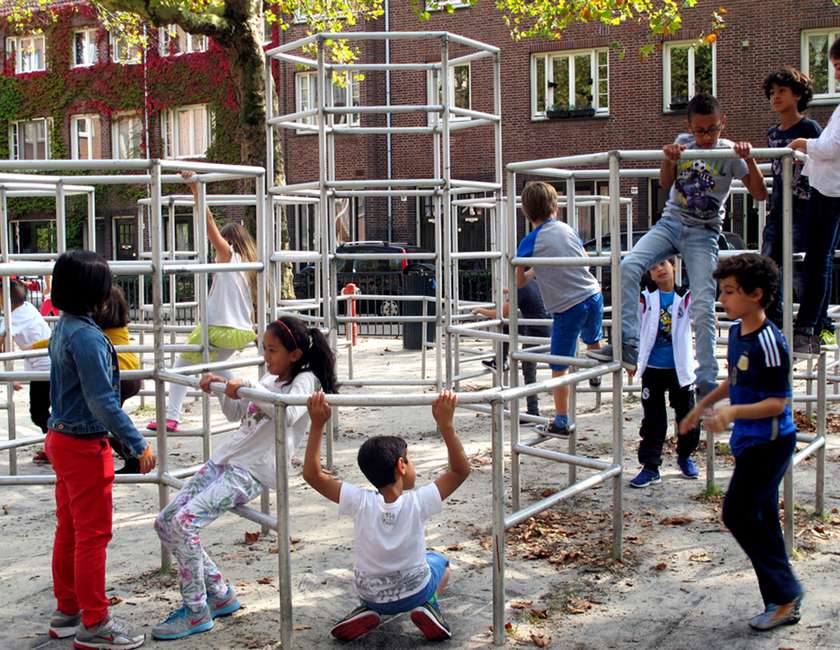
Playground designed in 1947 by Aldo van Eyck in Bertelmanplein, Amsterdam
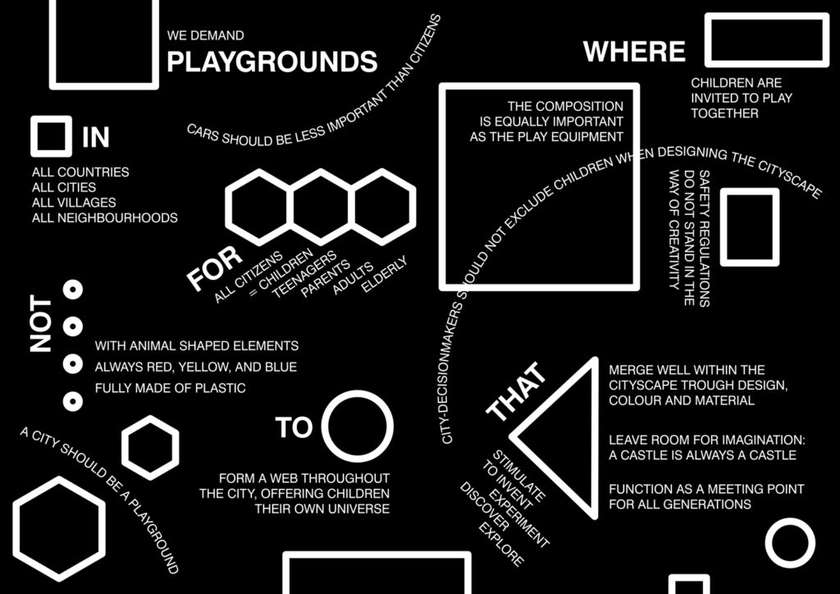
Visual Manifesto is a proposal of what to think about when designing more stimulating playgrounds for all generations. It is a playful tool for people who work on the playground projects and question how to start designing for children.